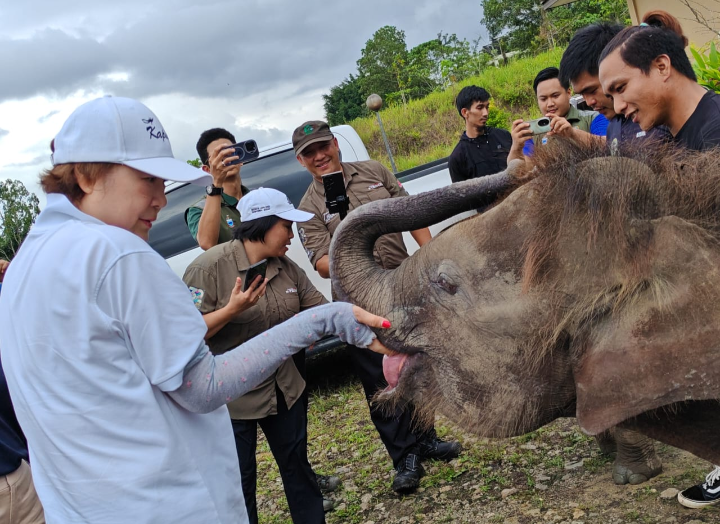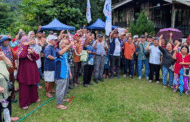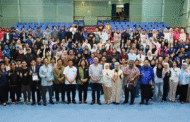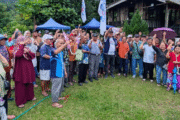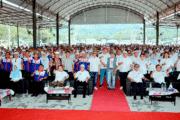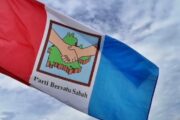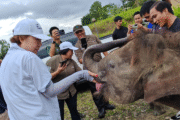Flashback to January 2025…Liew feeding a female baby elephant with a piece of carrot during her visit to the Bornean Elephant Sanctuary (BES) in Kinabatangan.
KOTA KINABALU: The year 2025 began and ended on a vibrant note for the Ministry of Tourism, Culture and Environment (KePKAS) and its agencies, marked by extensive tourism, cultural and environmental initiatives across Sabah.
KePKAS Minister Datuk Seri Christina Liew set the pace early in the year with a working visit to Kinabalu Park to inspect the RM1 million upgrade of Timpohon Gate — the iconic entry point to Mount Kinabalu trails — before embarking on a busy calendar of projects and engagements throughout the year.
“Hectic months followed with no room for complacency as preparations are underway for the Visit Malaysia Year 2026 (VM2026). The State Government, through KePKAS and its agencies, is now gearing up for VM2026,” Liew said.
Among the initiatives rolled out in support of VM2026 are the upgrading of the exhibition area in the Sabah Islamic Civilisation Museum, the introduction of the Hop-on Hop-off City Bus Tour in Kota Kinabalu, and improved facilities at Poring Hot Springs (Ranau) and Layang-Layang, Mount Kinabalu. Other works include enhancements to the Agnes Keith House (Sandakan), the Batu Tulug Archaeological Site (Kinabatangan), the Bukit Tengkorak Archaeological Site (Semporna) and the Visitor Information Centre at Tanjung Simpang Mengayau (Tip of Borneo, Kudat), which now features a café and souvenir shop.
Liew also announced that four new areas — Teluk Darvel and Tambisan Island waters in Lahad Datu, Mengalum Island (Kota Kinabalu) and Mantanani Waters (Kota Belud) — have been identified for gazettement under the Board of Trustees of Sabah Parks.
“All these efforts are in line with Sabah’s commitment to the Convention on Biological Diversity and the Kunming-Montreal Global Biodiversity Framework, which targets the protection of 30 per cent of Malaysia’s biodiversity area by 2030,” she said.
KePKAS is currently drafting the Sabah Tourism Blueprint, a comprehensive master plan to guide holistic and sustainable development of the state’s tourism sector, prioritising rural inclusion, infrastructure, air connectivity and community empowerment.
Boosting Heritage and Creativity
In an effort to enhance Sabah’s global profile, the Ministry has also allocated RM50,000 to support the production of “Jungle Adventures – Borneo’s Lost Film”, based on a 1921 wildlife documentary shot in North Borneo by American filmmakers Martin and Osa Johnson.
“This new documentary will serve as a tourism product to showcase Sabah to the world and strengthen our image as a premier ecotourism destination,” said Liew.
Spotlight on Sandakan
Liew dismissed claims that Sandakan had been sidelined, stressing that the east coast district remains a key tourism focus.
“We have not neglected Sandakan. Our records speak volumes of what has been implemented to upgrade tourism facilities in this east coast town,” she said.
Her first outstation trip of the year was to launch the Elephant Food Corridor project in Lower Kinabatangan, aimed at reducing human-elephant conflicts. The Ministry, together with the Environment Protection Department, also distributed 1,000 reusable bags to the Sandakan and Kinabatangan communities in support of the state’s anti-plastic initiative.
The Sabah Wildlife Department, in turn, has committed to upgrading the Bornean Elephant Sanctuary (BES) — including road access, electricity, pipelines, a new paddock, staff quarters, and office facilities — ahead of its opening to tourists.
Upgrading East Coast Attractions
During her second trip to Sandakan in May, Liew announced RM1.25 million in allocations for upgrading the Sepilok Orangutan Rehabilitation Centre, the Bornean Sun Bear Conservation Centre (BSBCC), the Agnes Keith House and the Martin & Osa Johnson Gallery.
“These projects are part of the State Government’s initiative to ensure Sabah is fully prepared for Visit Malaysia Year 2026,” she said.
She also revealed plans to renovate the PWD 2002 building next to Agnes Keith House to house the upcoming Johnsons Gallery, which will strengthen historical tourism in the district.
Liew noted that KePKAS has supported the BSBCC since its inception in 2008.
“This 17-year-old attraction, home to 42 rescued sun bears, continues to draw visitors like a magnet,” she said, adding that RM250,000 has been allocated this year to upgrade its entrance deck.
Festivals and New Tourism Products
KePKAS also supported key cultural and eco-events in Sandakan, including the 4th Sepilok Jazz Festival, the Sandakan Tree Trail and the Rasa Sandakan Food Trail.
The Sepilok Jazz drew 2,200 visitors, with proceeds channelled to the Friends of Sea Turtles Education and Research (Foster) project in Libaran. “By integrating music, tourism, culture, and marine conservation, these events show how environmental protection can be celebrated creatively,” said Liew.
The Sandakan Tree Trail was recently recognised by the Malaysia Book of Records as the country’s first historical tree trail — another milestone for the town’s heritage tourism.
Meanwhile, the Rasa Sandakan Food Trail highlighted the town’s culinary diversity, positioning it as Sabah’s emerging gastronomic capital.
Sustaining Growth and Environmental Collaboration
KePKAS also upgraded the car park and signage at Gomantong Caves and is working with the Sabah Environmental Protection Association (SEPA) to form a joint committee on environmental management.
Planned activities include a Clean Kota Kinabalu Campaign and awareness programmes to strengthen public environmental consciousness.
With these efforts, Sabah’s tourism performance continues to surge.
“We are optimistic of hitting our 3.5 million visitor target by year-end,” Liew said.
From January to September 2025, Sabah recorded 2.83 million tourist arrivals — a 17 per cent year-on-year increase, representing 91 per cent of pre-pandemic levels and RM6.58 billion in receipts.
Domestic arrivals rose to 1.66 million (+16.8 per cent), while international arrivals reached 1.16 million (+17.2 per cent), fully recovering to pre-pandemic volumes.
Tourism Minister’s 2025 Report Card
Beyond tourism performance, Liew also represented Chief Minister Datuk Seri Hajiji Noor at the national launch of VM2026 by Prime Minister Datuk Seri Anwar Ibrahim in Putrajaya.
On the home front, she launched the planting of Napier grass along a 9km stretch of the Lower Kinabatangan River — part of the Elephant Food Corridor Project covering 33.35 acres. The project, implemented by RESPECT and funded by Borneo Conservation Trust Japan, aims to reduce elephant-human conflicts.
Liew also revisited her earlier vision for a Sabah Cultural Complex — a RM100 million project in Kinarut to showcase the heritage of Sabah’s 35 ethnic groups. Chief Minister Hajiji officiated the groundbreaking, marking a milestone in the state’s cultural tourism development.
Additionally, KePKAS has greenlit the demolition of the old Wisma Budaya along Jalan Tunku Abdul Rahman, Kota Kinabalu, to make way for the 22-storey Wisma Pelancongan dan Kebudayaan — a modern complex that will serve as a new headquarters for tourism and cultural agencies.
Optimism for the Future
Reflecting on a year of accomplishments, Liew said the Ministry’s steady progress underscores Sabah’s strong position ahead of VM2026.
“With continued collaboration between government, industry, and communities, Sabah is poised to shine on the world stage as an ecotourism and cultural destination,” she said.










